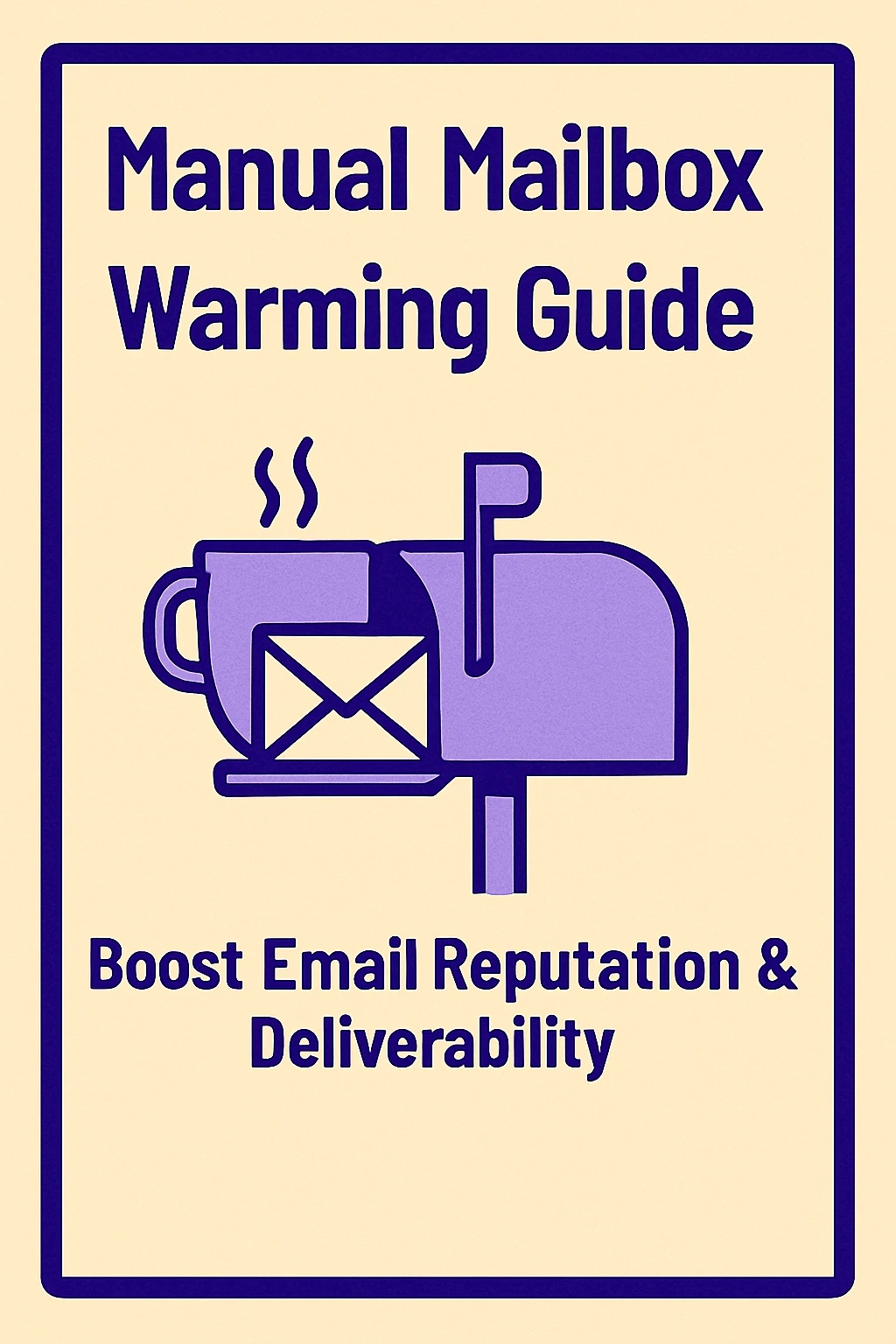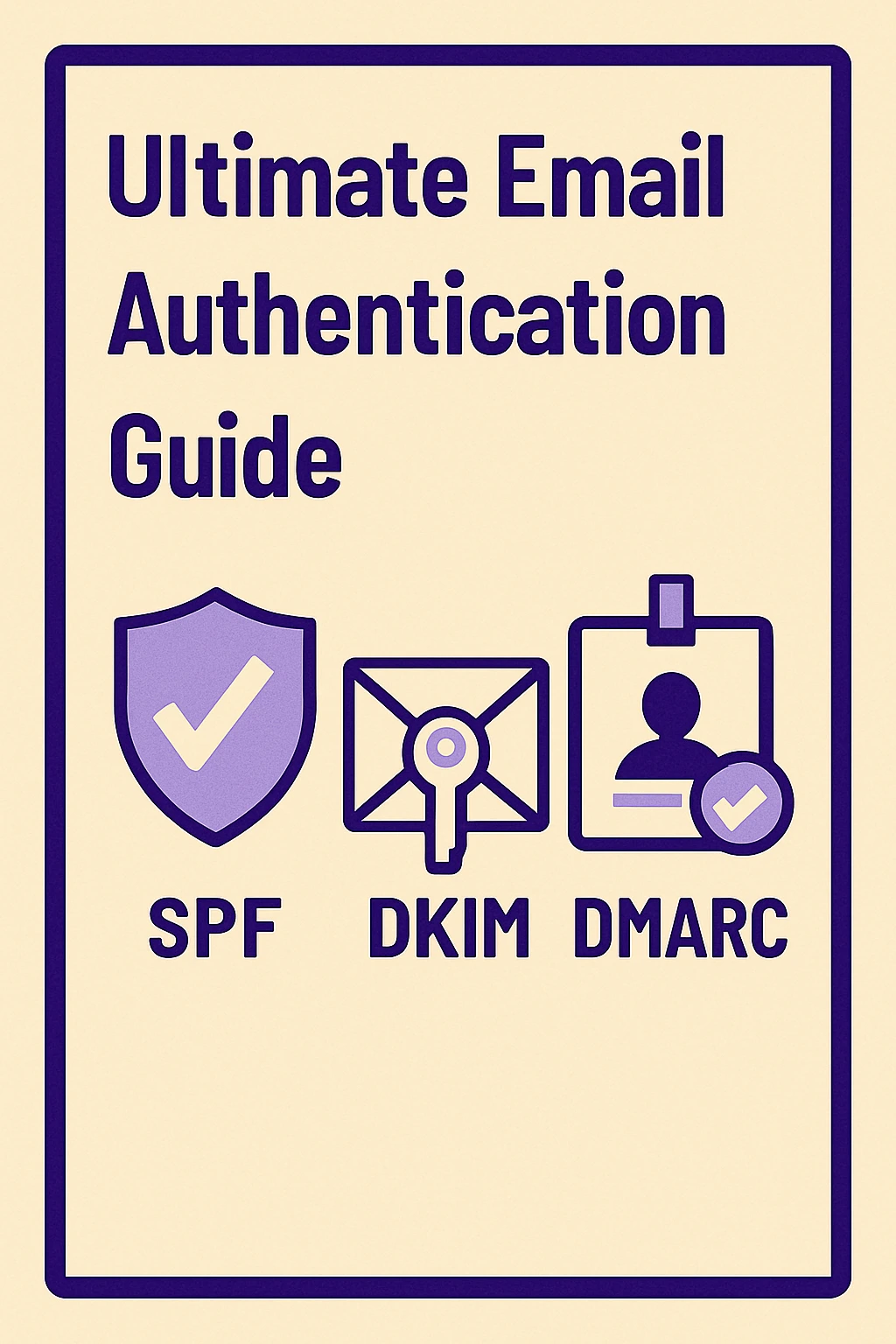Powerful Guide to Domain Masking in Email Infrastructure
Domain masking in email infrastructure is a strategic practice that helps cold emailers, marketers, and businesses protect their primary domains while improving deliverability and trust. This blog breaks down everything you need to know—from what domain masking is and how it works, to its benefits, technical setup, risks, and best practices. We also compare domain masking to dedicated sending domains and highlight top email infrastructure tools like MailKarma.ai, SMTP2GO, Mailazy, and others—complete with features, pros, cons, and best use cases. Whether you’re running cold outreach or transactional emails, this guide will help you implement domain masking the right way and keep your sender reputation strong.

Have you ever clicked a link in an email and noticed the URL didn’t match the brand that sent it? That’s domain masking at work. In today’s email-driven world—especially for cold outreach—domain masking in email infrastructure is more than just a branding move. It’s a smart strategy to protect your main domain, boost trust with your audience, and keep your deliverability rates high.
Whether you’re a startup founder sending cold emails, a marketer running outreach campaigns, or an agency managing multiple client domains, understanding how domain masking works can save you from serious issues like blacklisting and spam filters. When set up correctly, it adds a professional touch to your emails and keeps your core domain reputation intact.
In this guide, we’ll break down what domain masking is, how it technically works, the benefits and risks involved, and the best practices you should follow. Plus, we’ll explore the top tools you can use to manage masked domains effectively—so you can stay out of the spam folder and land more emails in the inbox.
What's Domain Masking in Email, and Why Does It Matter?

Domain masking in email is a hidden trick. It makes your emails look like they come from your main brand, even if they're sent by another service. This helps your emails get delivered and builds trust.
What is Domain Masking?
Domain masking means showing a different domain name in an email than the one actually sending it. It's like putting your brand's sticker on an email sent by another service. This is key for emails, especially cold emails, where trust is everything.
Why Use It for Emails?
For cold emails, you want to look professional and safe. Domain masking helps your emails appear branded without risking your main website's reputation. This boosts your email delivery and helps avoid spam folders. It also makes all your links and tracking look consistent with your brand.
Masking vs. Forwarding: What's the Difference?
Don't mix these up:
- Domain forwarding sends a user to a new website address.
- Domain masking keeps the original website address visible but gets content from somewhere else.
Masking is often used in cold emails to hide the actual sending server or tool.
How Domain Masking Works

The Techy Bits: CNAME, DNS, and SMTP
To make domain masking work, you need:
- CNAME and DNS records: These point your branded domain to the email sending platform.
- SMTP setup: This makes sure emails are sent using that platform but show your brand.
- SPF, DKIM, and DMARC: These are security checks that prove your emails are real and help them reach the inbox.
When set up correctly, your emails are more likely to get delivered.
How Email Platforms Use It
Many email services use domain masking:
- Branded Links: Platforms let you use your own branded links in emails (like click.yourbrand.com). This makes everything look more consistent.
- Hidden Senders: Some services let you completely hide that a third-party is sending your emails.
Why Domain Masking Helps Cold Emails
- Builds Trust: People are more likely to open emails from a name they recognize.
- Better Delivery: It protects your main domain's reputation, helping emails land in inboxes.
- Protects Your Website: If a cold email campaign goes wrong, your main website won't get blacklisted.
- Better Tracking: It helps you track email performance and integrate with analytics tools while keeping your brand visible.
Risks of Domain Masking
- Setup Mistakes: Wrong settings can cause delivery failures or even make your emails look like spam.
- Spam Risk: Using strange masked domains without proper setup can trigger spam filters.
- Less Transparency: Some users might find masked domains less trustworthy if they don't clearly match your brand.
Best Tips for Domain Masking
- Pick a Smart Domain: Choose a secondary domain that matches your brand (e.g., yourbrandhq.com).
- Set Up DNS Correctly: Follow your email provider's instructions exactly for DNS and CNAME records.
- Use SPF, DKIM, DMARC: Always set up these security checks for your masked domains.
- Watch Your Reputation: Use tools like MailKarma.ai to constantly check your domain's health and spam scores. This helps prevent problems.
Real-World Tools Supporting Domain Masking
MailKarma.ai
MailKarma.ai is a deliverability monitoring platform designed to help cold emailers and agencies maintain healthy email infrastructure. It provides proactive alerts, domain reputation tracking, and deep DNS insights.
Features:
- Real-time domain reputation monitoring
- DNS record analysis (SPF, DKIM, DMARC)
- IP blacklisting checks
- Inbox placement and spam diagnostics
Pros:
- Comprehensive deliverability insights
- Accurate spam trap monitoring
- Alerts for sudden domain reputation drops
Cons:
- Not a sending platform; monitoring only
- Requires external setup for full actionability
Best For: Cold emailers and agencies that want to proactively monitor domain health and ensure their email infrastructure remains clean.
SMTP2GO
SMTP2GO is a cloud-based SMTP service that supports white-labeling and domain masking. It helps businesses send reliable transactional emails globally with custom domain options.
Features:
- Custom domain tracking with CNAME support
- White-labeled SMTP and email sending
- Bounce and open rate analytics
- Global SMTP relay network
Pros:
- Easy setup with DNS tools
- Great for transactional emails
- Solid customer support
Cons:
- No built-in CRM
- Some features behind higher pricing tiers
Best For: Companies sending branded transactional emails and looking for simple domain masking with strong SMTP delivery.
Mailazy
Mailazy is a lightweight email API platform tailored for developers. It provides flexible SMTP and REST API access with support for domain masking and authentication.
Features:
- Reliable SMTP + REST API
- Supports custom CNAMEs for link tracking
- SPF, DKIM, DMARC assistance
- Clean, developer-friendly interface
Pros:
- Affordable for startups
- Fast onboarding
- API-focused and lightweight
Cons:
- Limited analytics dashboard
- Fewer integrations than bigger players
Best For: Tech-savvy teams that want to integrate domain masking into their stack without a bloated interface.
Postmark
Postmark is a transactional email service built for developers. It offers fast delivery, full domain authentication, and customizable white-label options for links and headers.
Features:
- Transactional email with strict IP and domain reputation management
- Verified sending domains with SPF/DKIM/DMARC
- Full white labeling of tracking links and headers
Pros:
- Extremely high deliverability
- Fast, reliable support
- Ideal for developers and SaaS
Cons:
- Not intended for cold outreach
- Limited list management features
Best For: Product-led companies that prioritize fast delivery and authenticated branded email infrastructure.
LuxSci
LuxSci is a secure email delivery provider that specializes in HIPAA-compliant services. It supports complete domain masking and secure routing for privacy-critical communications.
Features:
- HIPAA-compliant email sending
- Full white-label domain and email routing support
- Enhanced outbound security protocols
Pros:
- Great for healthcare or regulated industries
- Strong deliverability with high-level encryption
Cons:
- Premium pricing
- Complex setup for beginners
Best For: Enterprises and medical institutions needing security-first domain masking and compliance.
MailerSend
MailerSend is an intuitive email infrastructure platform with drag-and-drop capabilities and API access. It supports domain masking for both transactional and marketing emails.
Features:
- Drag-and-drop email builder
- Full SMTP + API access
- Custom domain tracking and CNAME support
Pros:
- Beautiful UI and templates
- Affordable for small businesses
Cons:
- Not ideal for large-scale cold outreach
- Limited in-app analytics
Best For: Marketers and small teams looking for a balance between branding, control, and cost-effective infrastructure.
SendGrid
SendGrid is one of the most popular cloud-based email delivery platforms. It provides comprehensive tools for domain authentication, link branding, and scalability.
Features:
- Trusted infrastructure with advanced domain masking tools
- Link branding, domain authentication, and subuser controls
Pros:
- Scalable for high-volume senders
- Easy to create and manage white-labeled domains
Cons:
- Can be overkill for small users
- Support may vary depending on pricing plan
Best For: Growing businesses that want domain masking with built-in scalability and strong sender reputation management.
Conclusion
Domain masking in email infrastructure is more than just a branding tactic—it’s a deliverability strategy. When executed correctly, it builds trust, protects your primary domain, and enhances analytics across the board.
Make it a point to monitor your setup using tools like MailKarma.ai. That way, you’ll catch potential issues before they impact your campaigns.
If you're serious about scaling your cold outreach or transactional emails without risking domain blacklisting, now’s the time to implement domain masking with best practices and proven tools.
FAQs
Is domain masking the same as domain forwarding?
No. Domain masking hides the original source domain behind a branded domain while keeping the branded URL visible. Domain forwarding redirects users to a different URL, typically changing what appears in the browser.
Can domain masking hurt deliverability if misconfigured?
Yes. Poor configuration of CNAME, SPF, DKIM, or DMARC records can result in email bounces, being flagged as spam, or even blacklisting.
Do I need a DMARC setup for masked domains?
Absolutely. DMARC ensures better email authentication and prevents spoofing. It adds a critical layer of security to masked sending domains.
What’s the best way to monitor my masked domain reputation?
Use tools like MailKarma.ai to actively track blacklists, spam filters, and DNS errors before they affect your inbox placement.
Can I use the same masked domain for multiple tools?
Technically yes, but it's best to create separate subdomains for each tool to avoid configuration conflicts and maintain clear tracking data.
Recent Blogs
FAQs: Everything You’re Wondering About Cold Email Deliverability & MailKarma’s Infrastructure
MailKarma is a dedicated email infrastructure solution built exclusively for cold email outreach. Unlike shared inbox tools or general ESPs, MailKarma gives you complete control over your sending setup—private US IPs, clean domains, and expert-backed deliverability practices. Built by cold email pros, MailKarma is optimized to scale outreach without landing in spam.
Because MailKarma sets up private infrastructure—including custom domains and mailboxes—it doesn’t offer a traditional free trial. However, you can explore the platform, view your dashboard, and test features before provisioning infrastructure. Our private dedicated email servers cost $150 per server plus $0.001 per email sent, making it extremely cost-effective for high-volume cold email campaigns. For Gmail Workspace solutions, pricing starts at $3.50 per email with a 10-email minimum, dropping to $2.50 per email for volumes over 100 emails. This transparent pricing model ensures you only pay for what you use while maintaining enterprise-grade email deliverability.
Yes. MailKarma automatically sets up SPF, DKIM, and DMARC records using best-in-class standards. No technical hassle—our system handles everything behind the scenes, and our support team is always ready to assist if needed.
Every MailKarma subscription includes:
- Automated DNS setup (SPF, DKIM, DMARC)
- Private mailbox hosting
- Ongoing deliverability optimization
- Server monitoring and uptime guarantees
It depends on your monthly sending volume and the number of contacts per sequence. To simplify this, MailKarma includes a volume-based calculator inside the app to help you choose the optimal setup for scale, safety, and inbox placement.
Gmail and Outlook aren't built for cold outreach—they throttle volume, rotate IPs, and limit deliverability. MailKarma gives you:
- Dedicated infrastructure
- Warmed IPs and aged domains
- No shared resources
- Built-in best practices for cold outreach
It's the infrastructure your outreach actually needs.

.png)



